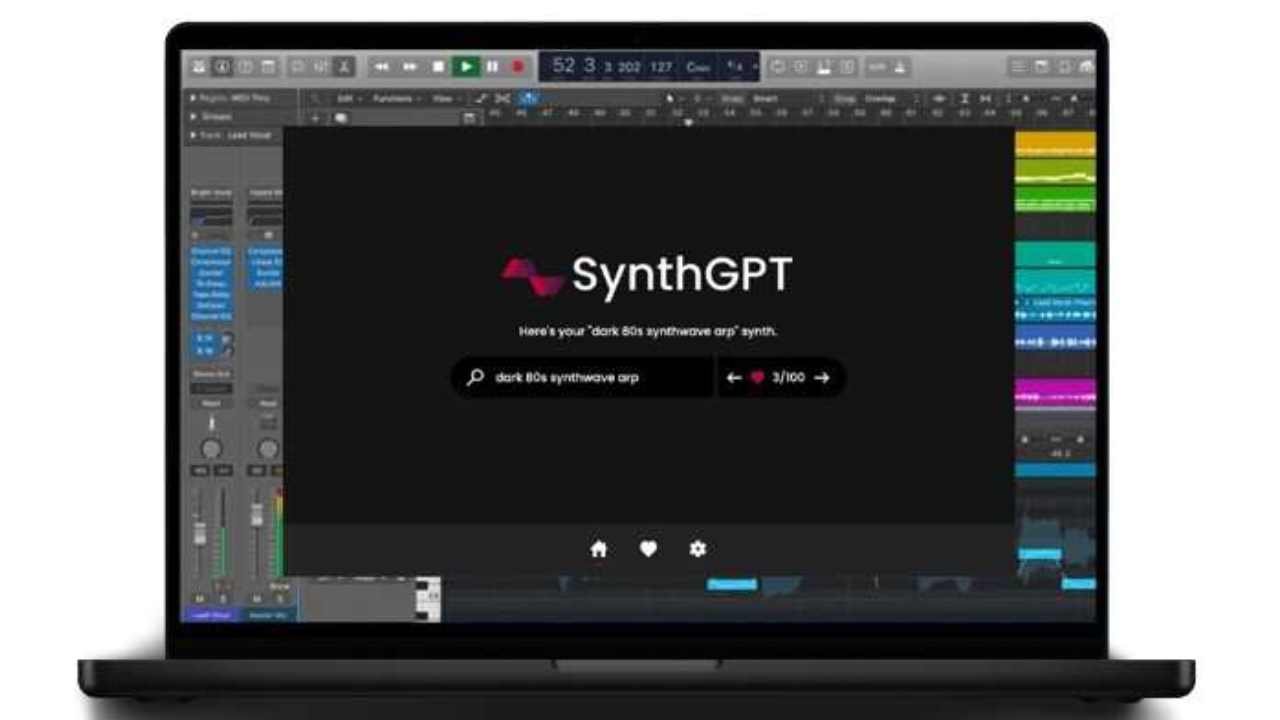SynthGPT: SynthGPT is a game-changer in sound synthesis, using AI to make it easy for users to create sounds. Initially introduced as an April Fools’ joke on April 1st, 2023, SynthGPT has turned into an exciting concept.

This platform lets you describe the sound you want by typing, and the AI takes care of bringing it to life. While it started as a joke, SynthGPT represents a big step forward in generating audio through natural language processing.
Even though SynthGPT isn’t available for commercial use yet, it has stirred up excitement in the tech and audio communities. The idea of expressing sound concepts through text and turning them into actual audio signals opens up creative possibilities for musicians, sound designers, and creators.
As SynthGPT continues to develop, there’s growing anticipation for its potential impact on audio production. It gives us a glimpse into a future where we can use natural language to create immersive auditory experiences.
The journey from an April Fools’ joke to a game-changing technology shows the dynamic nature of innovation, leaving us eager to see SynthGPT released and widely adopted in the evolving world of sound synthesis.
How SynthGPT Works
SynthGPT’s main engine is a fancy neural network that learned from a massive collection of sounds and their written descriptions. So, when you type something like “warm analog synth pad with a soft attack,”
The AI breaks down the words to understand things like timbre, envelope, harmony, and effects. Then, it creates an audio waveform with those qualities, and you get it as a royalty-free sound.
Early tests of SynthGPT show it’s really good at making all sorts of sounds without copying existing libraries. Users can tweak the results by adding words like adjectives and phrases.
Almost like having a chat with a real sound designer. Behind the scenes, SynthGPT does some tech magic, like using latent vector interpolation, to mix things up and make each result a bit unique, even if you use the same starting point.
The Technology Behind SynthGPT
SynthGPT uses advanced AI tech, like transformer-based neural networks, to understand text and make sounds. It learned by looking at text and audio clips, figuring out the differences between sounds, like a “bright, crisp bell” and a “warm, rich cello.”
The cool thing about SynthGPT is it doesn’t just sort existing sounds – it can make brand new ones. It does this by turning text into audio using smart tricks like variational autoencoders and latent vector interpolation.
This means it can create unique sounds without copying anything, making SynthGPT a user-friendly leader in AI-driven sound creation for anyone excited to try out fresh auditory experiences.
Consequences for Sound Engineers and Musicians
Even though SynthGPT started as an April Fools’ joke, it’s got serious potential for the future of sound design if it keeps evolving. Just imagine being able to describe any sound, and bam! AI creates a custom audio clip – a real game-changer for music, film, games, and more.
For sound designers, it means no more digging through libraries or doing manual synthesis. Just describe the vibe you want, and let the AI handle the variations. Plus, it’s royalty-free, so you can get creative without legal worries.
In music composition, SynthGPT could be a killer brainstorming buddy. Describe what you need, get instant unique sound suggestions. The descriptive approach also works great for tweaking sounds over time.
Like teaming up with a producer. As SynthGPT grows, it could totally shake up the creative process, giving artists and sound designers an efficient and cool tool to bring their ideas to life.
Current Availability of SynthGPT
SynthGPT is still in the early stages, and you can’t get your hands on it just yet since it was initially revealed as an April Fool’s Day prank. However, the idea makes sense considering how much AI has progressed. Researchers are already working on similar systems that can turn text into audio.
There’s a good chance that something like SynthGPT could be available to everyone in the next few years. It would be a handy tool for customizable sound design, letting you interact with it using natural language.
Companies like Anthropic are making sure these AI models work safely, using techniques like constitutional AI to avoid issues like plagiarism.
Looking ahead, things seem promising as concepts like SynthGPT develop further. While sound designers wait for these tools, they can still play around with text-to-image AI models for visualizing sound ideas.
With ongoing improvements in AI creativity, it won’t be long before descriptive sound design tools like SynthGPT become a reality. The next few years hold exciting possibilities for AI-driven sound design.
Conclusion
In conclusion, even though SynthGPT is still a joke as of 2023, it offers a promising future for AI-assisted sound design. SynthGPT has the potential to significantly improve and accelerate sound engineering in a variety of sectors by utilizing AI to procedurally materialize any desired sounds based on textual descriptions.
It will take time to determine if similar text-to-audio models result from the quick advancements in creative AI systems, but the opportunities are countless. Sound designers will be able to describe their most imaginative audio visions in an exploratory manner and watch as cutting-edge AI brings their visions to life.
